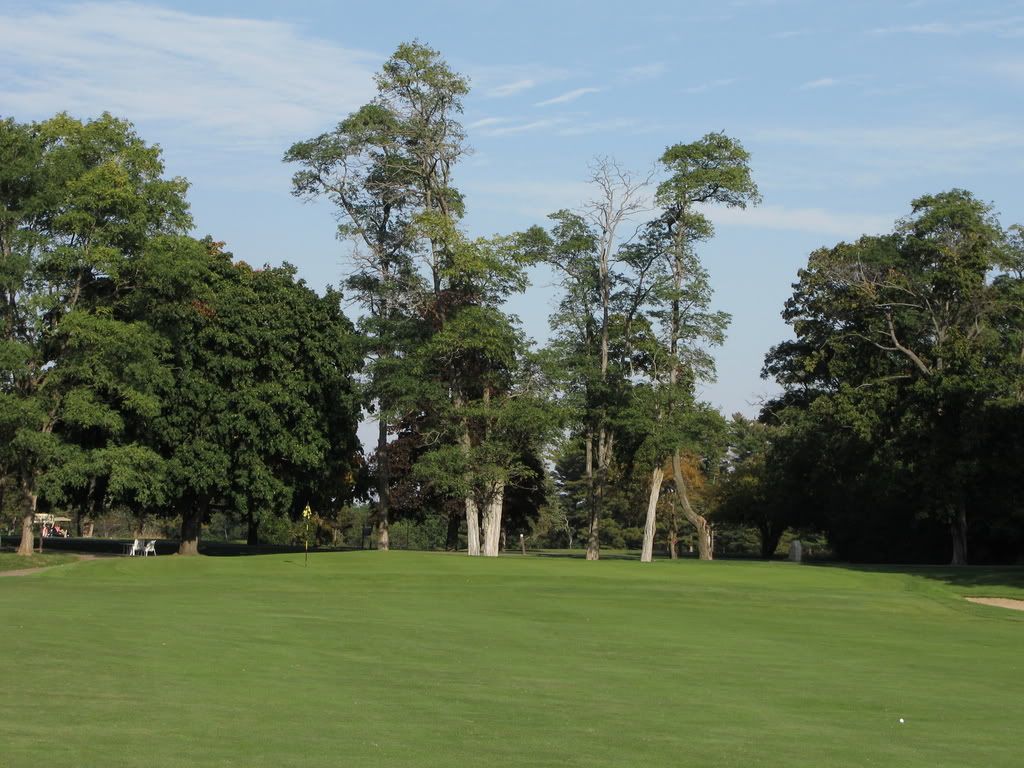Quirky good looks, depth of character, a sense of humor, an abundance of soul; what more could you possibly want.
Originally dubbed Lawsonia Country Club, the Links Course was part of a $3.0 million 1,000+ acre resort development on the shores of Green Lake, Wisconsin. The resort was developed by the Stone Company of Chicago which had purchased the property from the estate of Chicago Daily News publisher Victor Lawson. The Green Lake area was first occupied by the Winnebago Indians of Wisconsin who felt Green Lake, Wisconsin’s deepest lake, possessed special spiritual power.

Built on the open farmland of Victor Lawson’s Estate, Lawsonia is the best preserved course of the underappreciated golf course design and construction team of William Langford and Theodore Moreau. Costing around $250,000, an enormous sum in the Roaring 20’s, the Links Course opened for Play in 1930. Legend has it that Walter Hagen played on opening day.
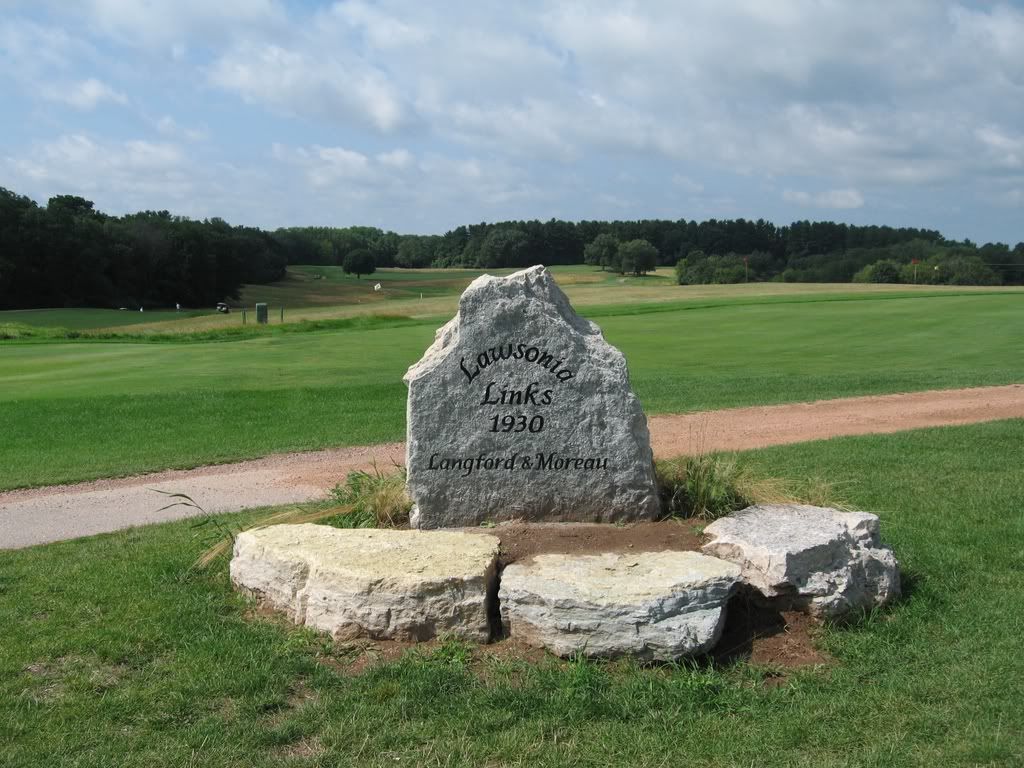
Their timing could not have been worse. Lots failed to sell and course went into receivership shortly thereafter. During WWII the grounds were used to house 400 German war prisoners and for a period of time the course was used as dairy pasture. Eventually the property, which was valued at $11.0 mil, was purchased by the American Baptist Assembly in the mid 1940’s for about $300,000.
Thankfully, the Links Course survived its early, troubled history largely intact. Architect Ron Forse has been engaged in recent years and a steady program of improvements have been undertaken and carried out by superintendent Mike Berwick. Notable has been the removal of many trees, recapture of shrunken green surfaces, esthetically pleasing addition of fescue areas and expanded fairways with redefined fairway lines more consistent with the flowing fairway lines as originally intended by Langford and Moreau.
Course in 1992. Starting from a centrally located clubhouse, the front nine is to left and back nine on right. Red T’s show where trees have been removed and yellow dots show bunkers that have been grassed over. The P shows a pond that was not part of the original course.
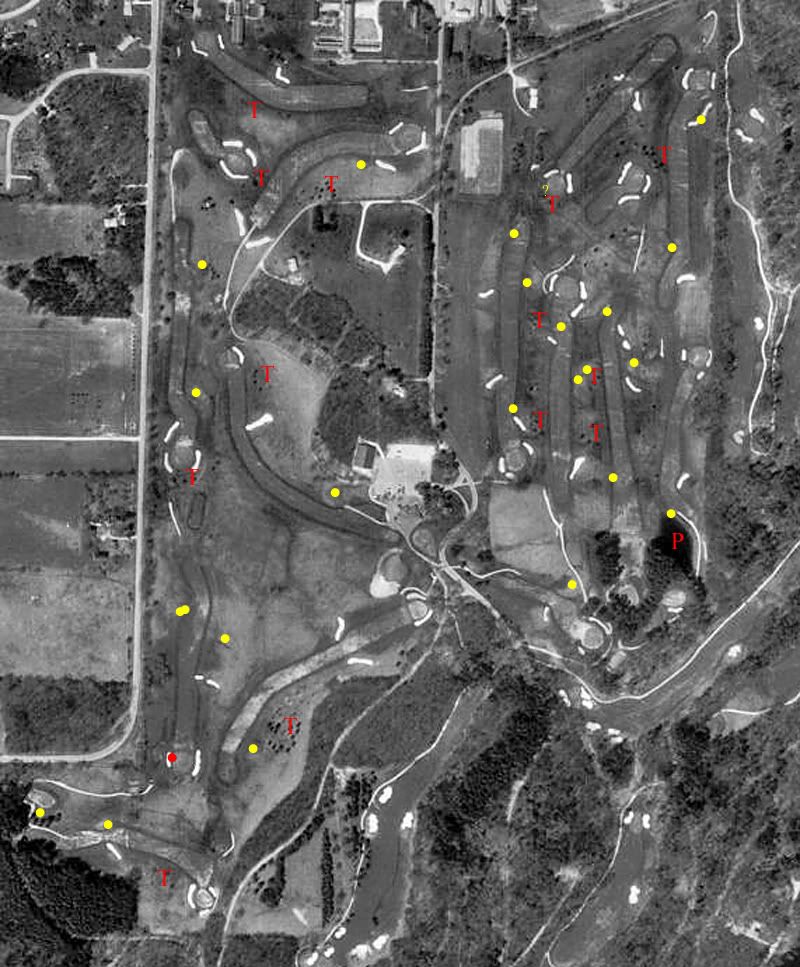
The following photos were taken over the last three years with several different cameras during various times of the golf season. A couple were cribbed from other GCA postsas noted.
Today the course is 6,853/6,481; it was 6,600 yards when it opened for play. Hole yardages indicated the current yardages from the tips/white tees with the original yardage in parenthesis.
1st Hole 418/407 (465)
Originally a par 5 with the tee located at the back of the current putting green. The drive would have been uphill and blind. Today this is the least interesting drive on the course which probably explains why I don’t have a photo of it. The hole, and particularly the cross bunker, makes much more sense as a par 5.
1st Fairway Cross Bunker This bunker is not in reach for most from the tee and makes more sense strategically for the 2nd shot of a par 5 with the fairway extended out far to the right. (photo Brent Carlson)
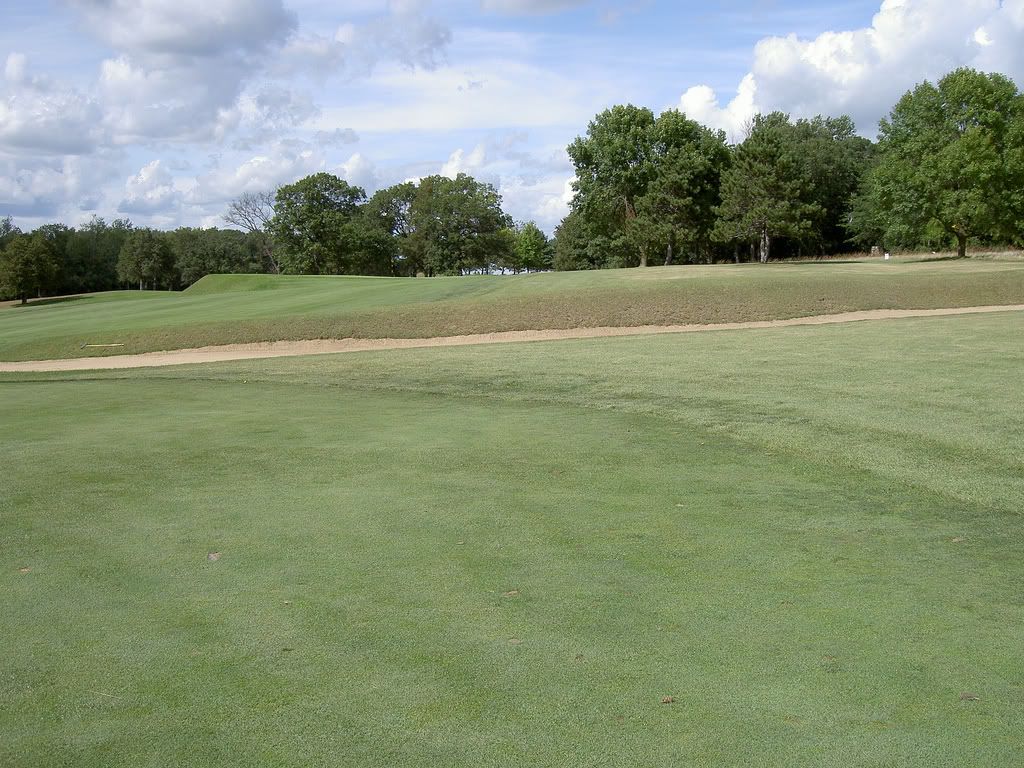
1st Green Typically large oval green with significant interior undulations
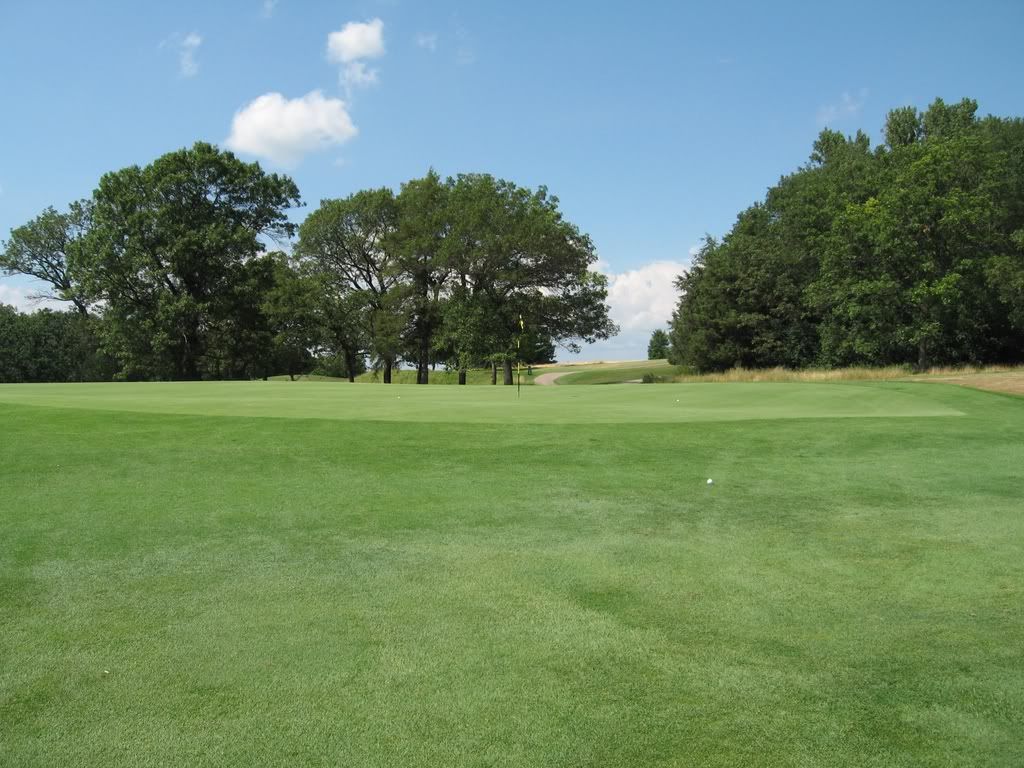
1st Green From Behind
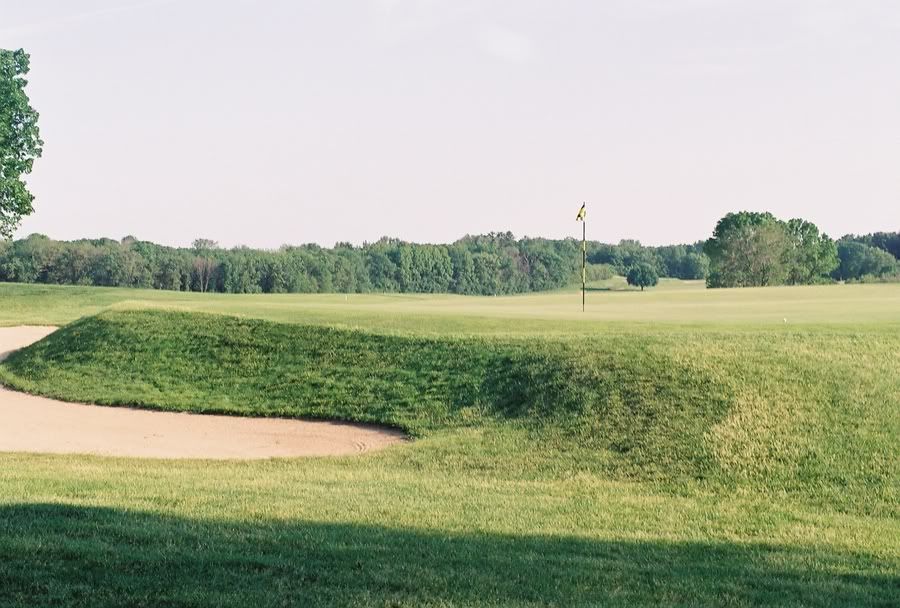
1st Green From 5th Fairway Showing Severe Penalty for those who miss on the left.
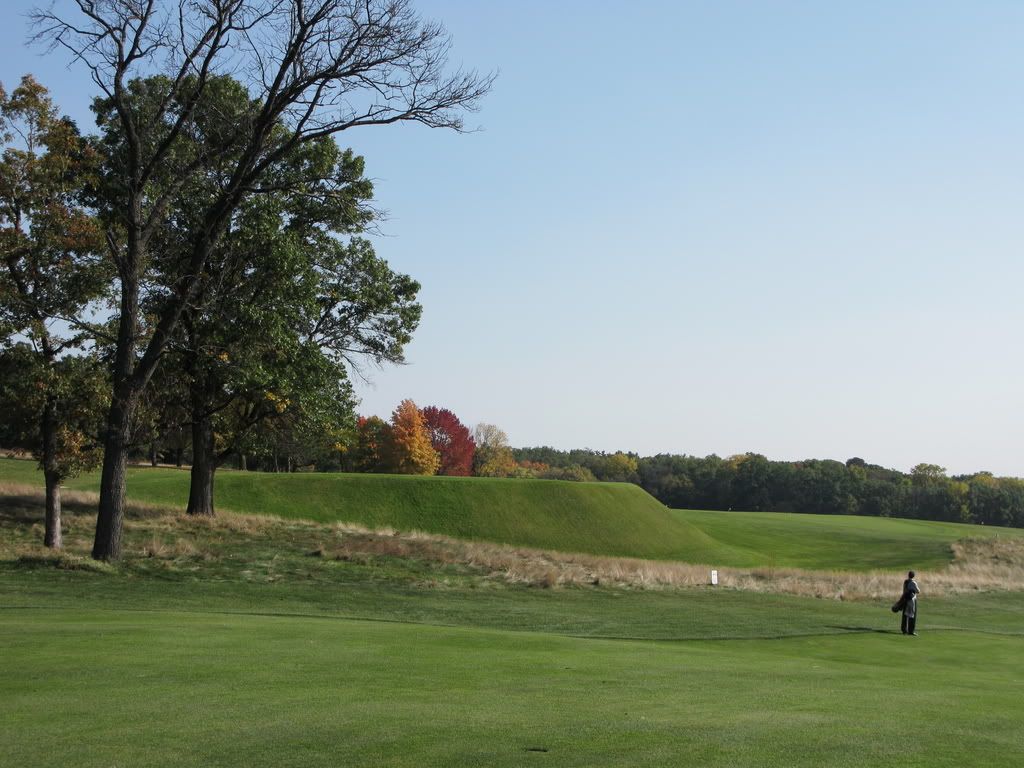
2nd Hole 431/422 (425)
My favorite drive on the course, up and over the fairway cop bunkers. The walk through the mounds presents a great view of the Lawson’s Guernsey Dairy Barn; a view I believe was intentionally created by the placement of the mounds. Green has always been awkwardly askew making me wonder if was damaged during the WWII time period.
2nd From Tee: the Proper Line is Over the Right Hand Cop Bunker
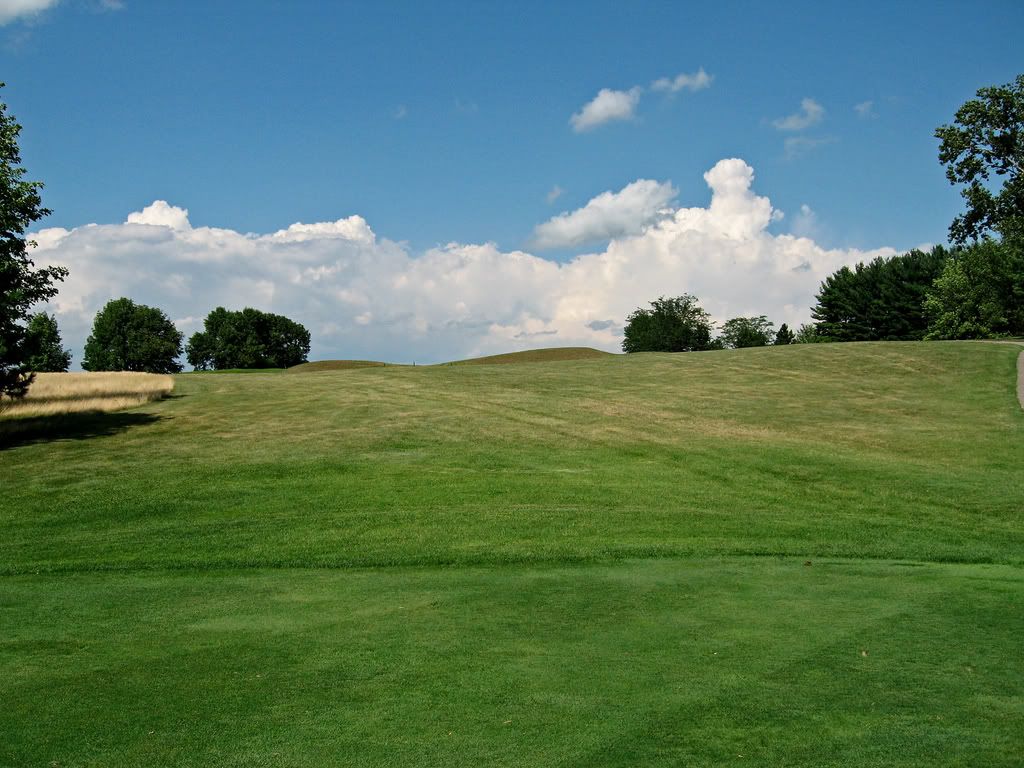
2nd From Between Mounds Showcasing the Lawson’s 1916 Guernsey Barn
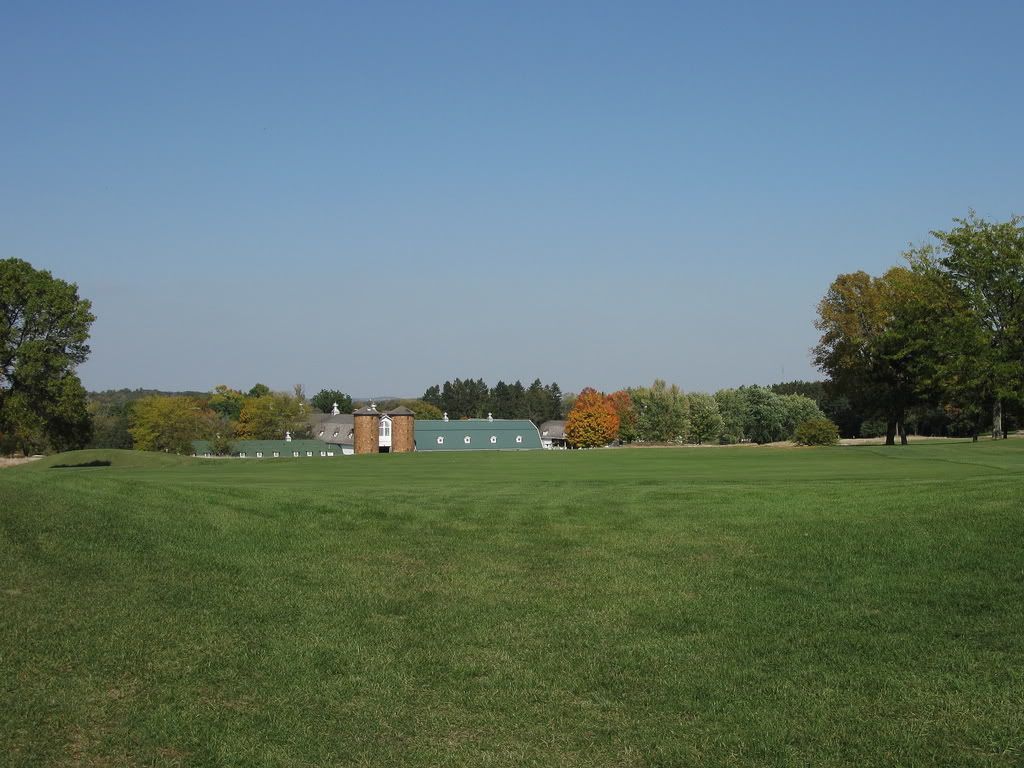
2nd From Fairway Right Over the Flanking Bunkers
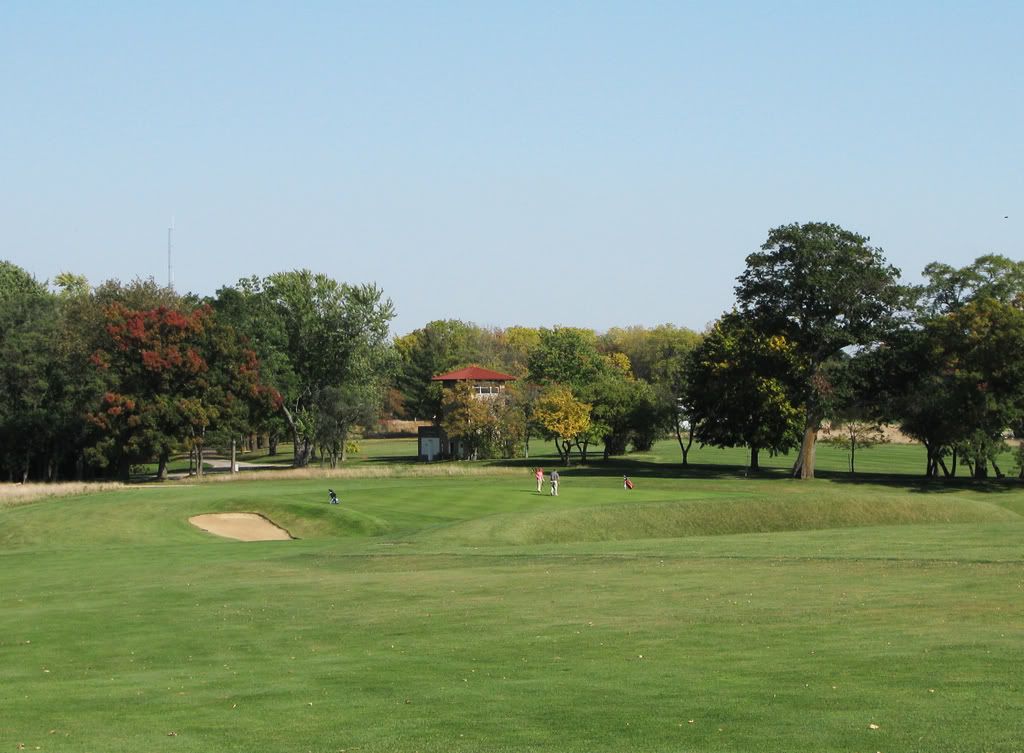
2nd From Fairway Left

2nd from Green Looking Back Showing Possible Ground Approach Over Flanking Bunkers

2nd in 1939
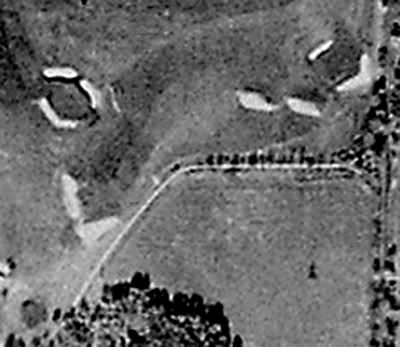
3rd Hole 386/367 (380)
This hole features a superbly placed bunker on the inside of the dogleg inviting the risk/reward of a shorter approach to a difficult raised green.
3rd from Tee
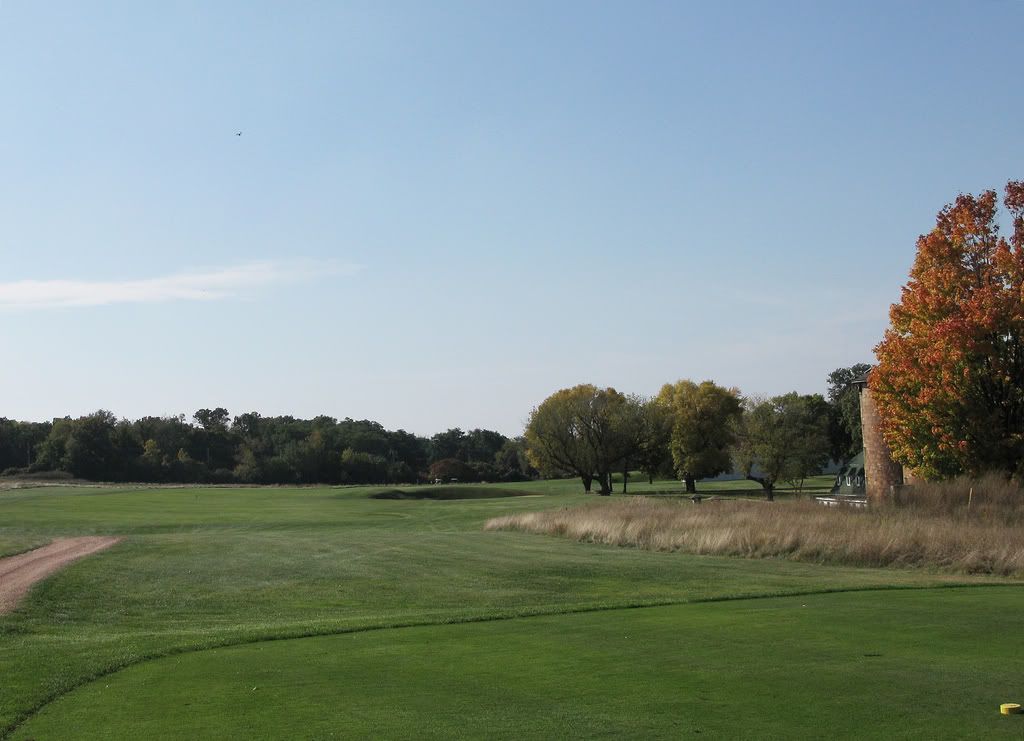

3rd Bunker

3rd Green from shade of tree since removed
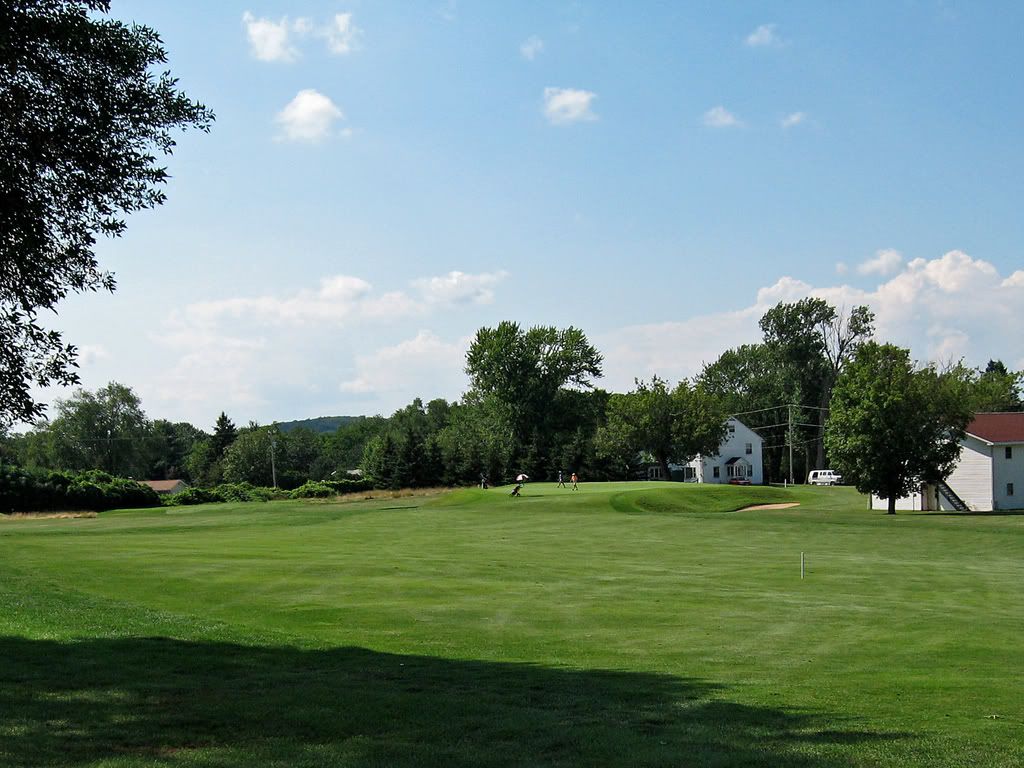
4th Hole 203/175 (205)
A fine hole, one of two long par 3’s intended to test one long iron and fairway wood play. The holes plays 1-2 clubs uphill to another large oval green whose surface is blind from the tee. With a large bunker at the base of the green giving the hole the look of a Redan, the hole does not posses the right to left angle and cant of the green required of a Redan. It may look like a Redan, but if it doesn’t play like a Redan, IMHO it is not a Redan. Redan or not, it is a great hole, one of the strongest and most unique on the course.
4th Hole Drawing
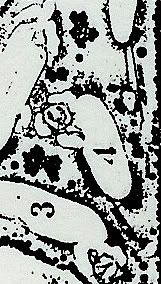
4th From Tee (Brent Carlson first photo)
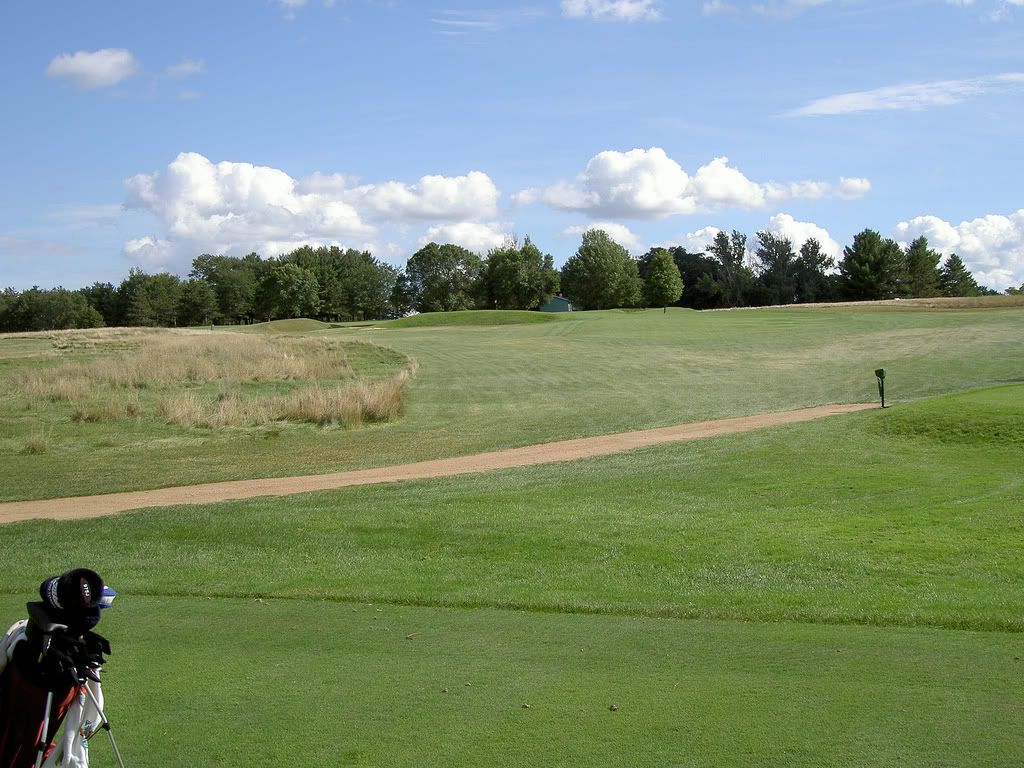
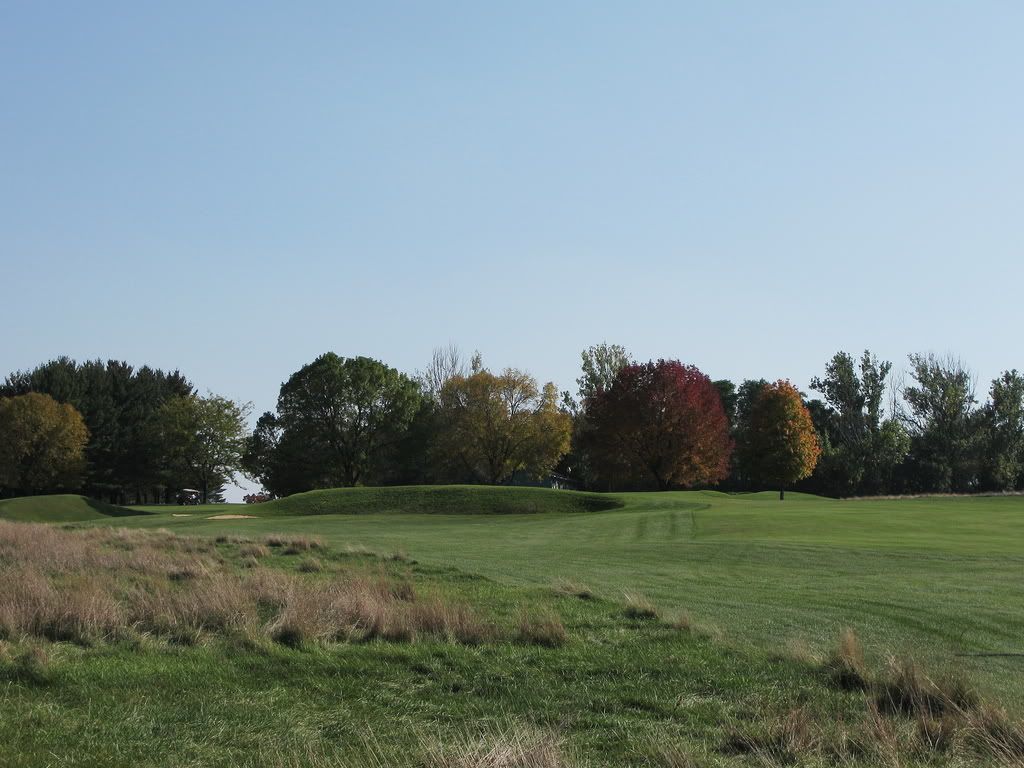
4th Look Back
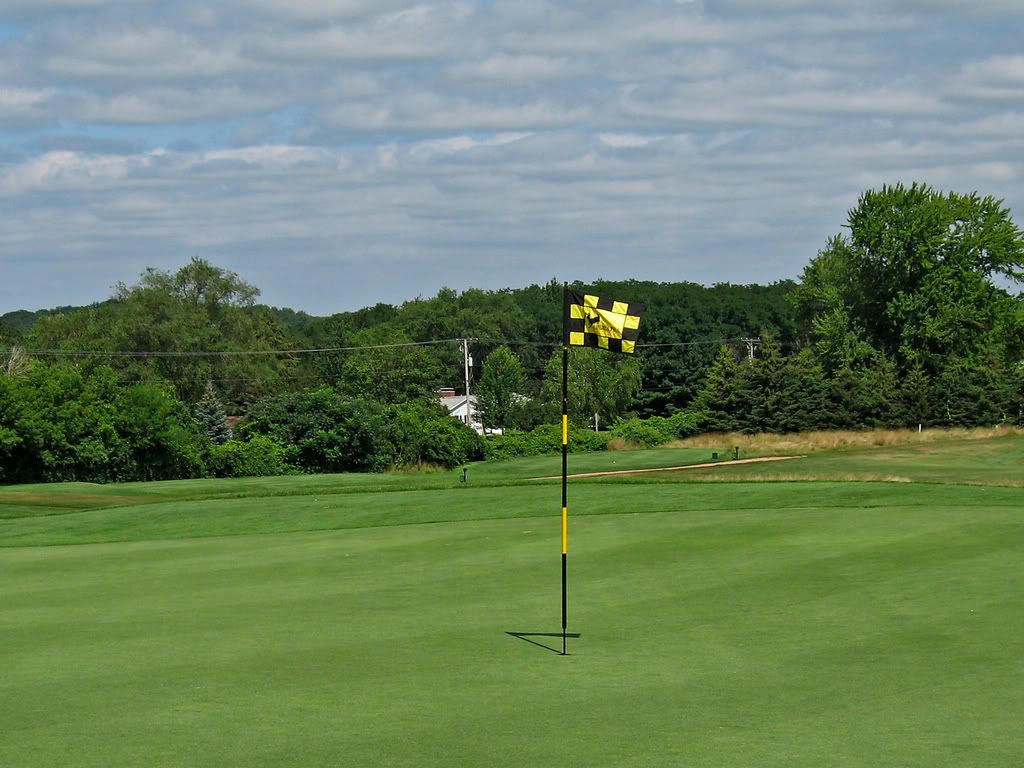
4th From Right Side
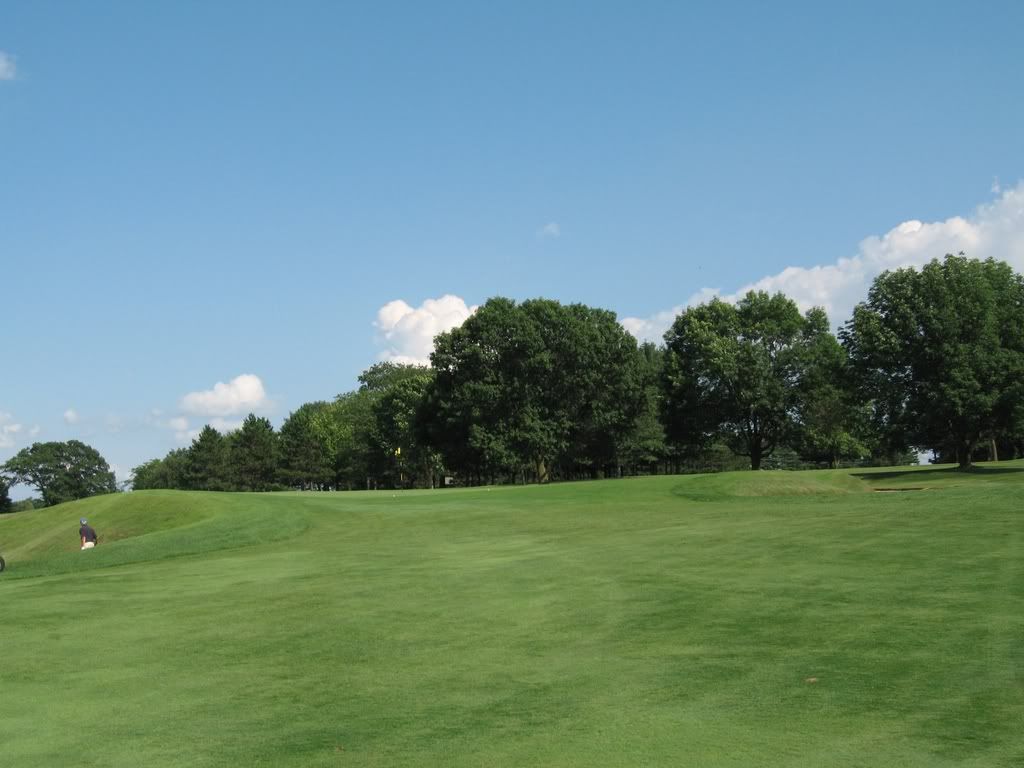
5th Hole 487/475 (445)
A funky short par 5 that may have been a par 4/5 as the original course plan shows an up tee and a tee in the current position . Tight drive into a narrow opening. Another large fairway cop bunker protects the left hand approach and deviously hides 70-75 yards of fairway between it and the green. With the green open and welcoming from the far left one is well advised to attack this bunker to leave an approach from the far left. One of the most difficult greens on the course.
5th From Tee
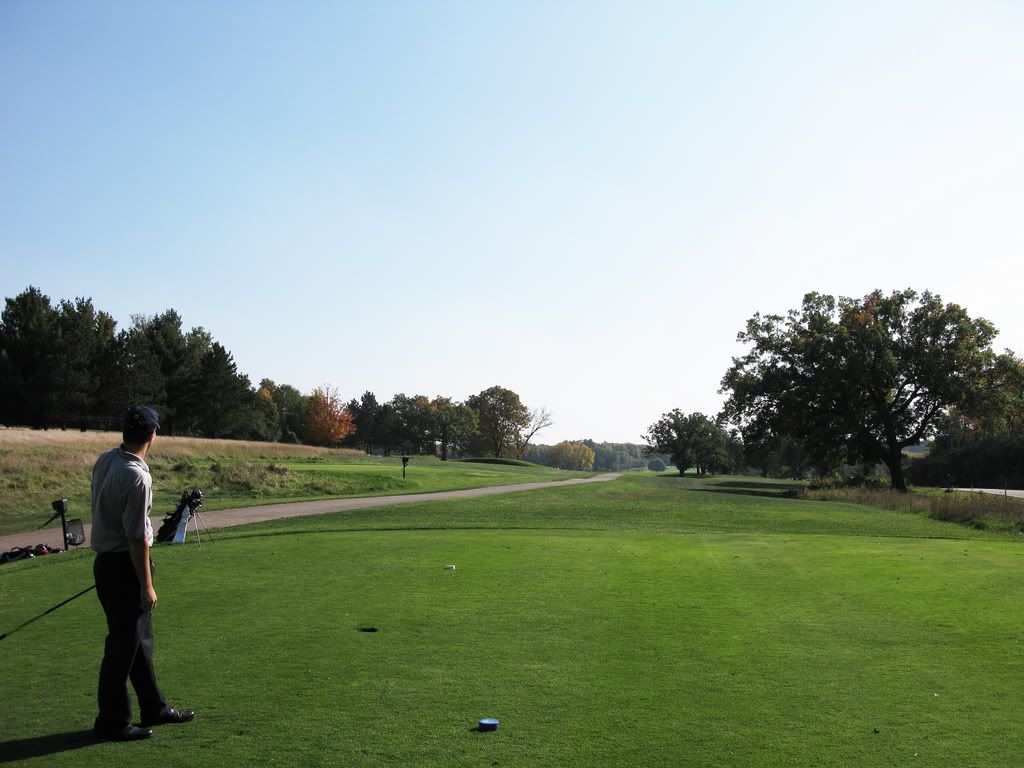
5th Left of Landing Zone
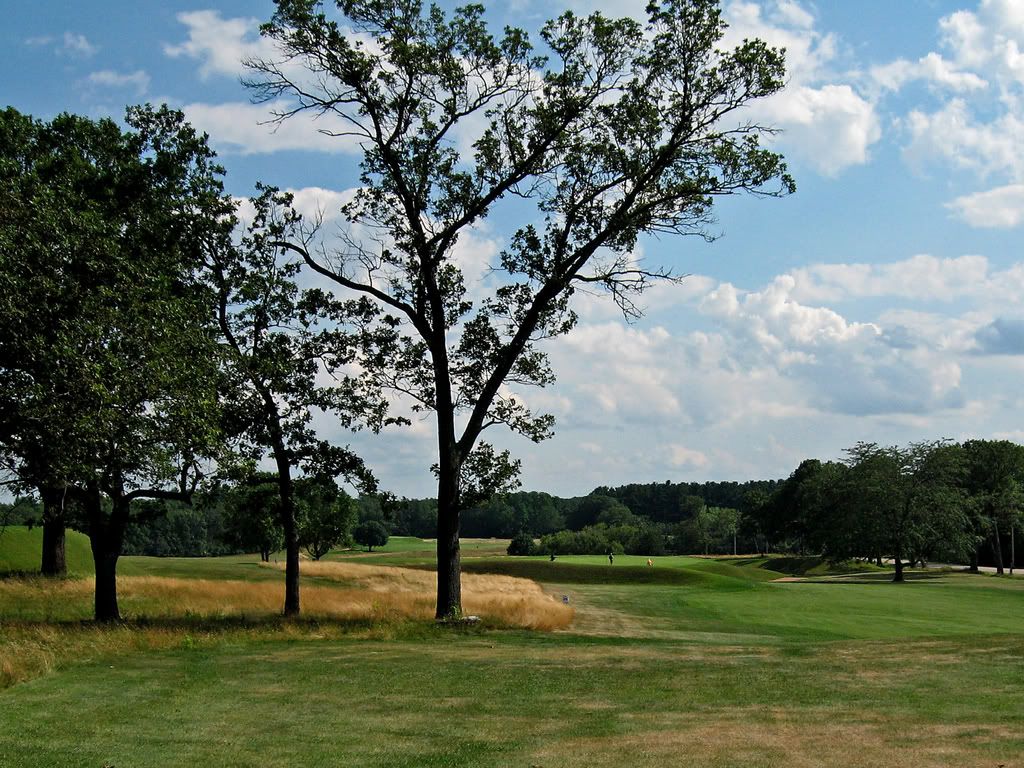
5th From 200 yds
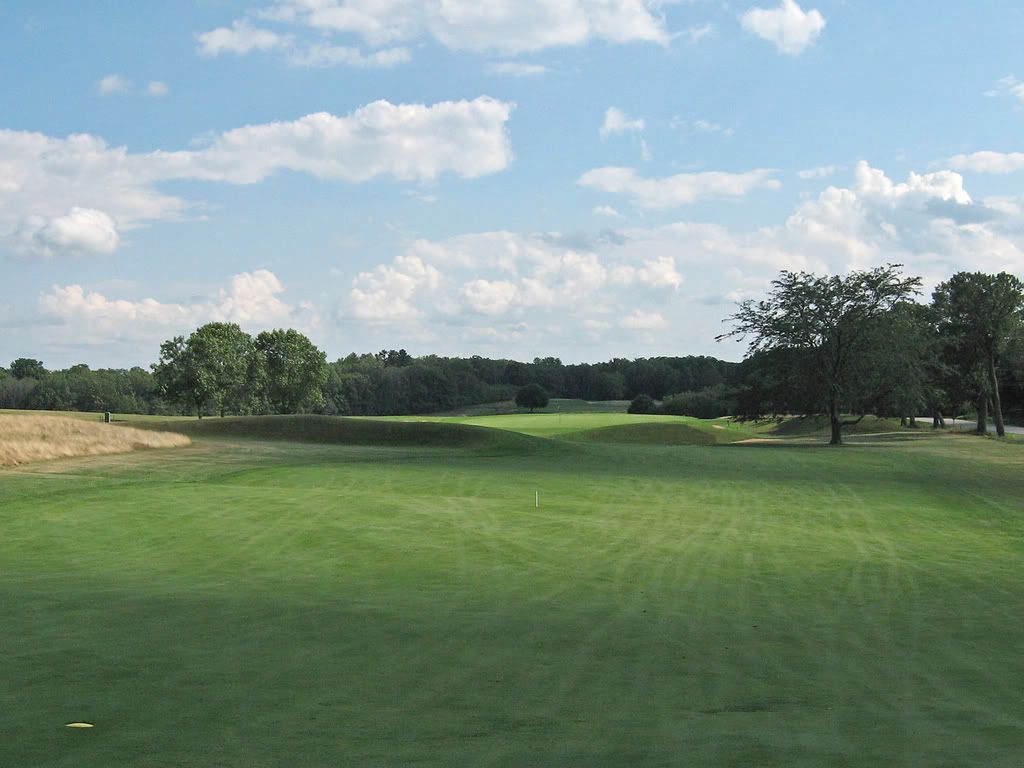
5th Green as approached from right; why its better to be left

5th From Green showing opening from left
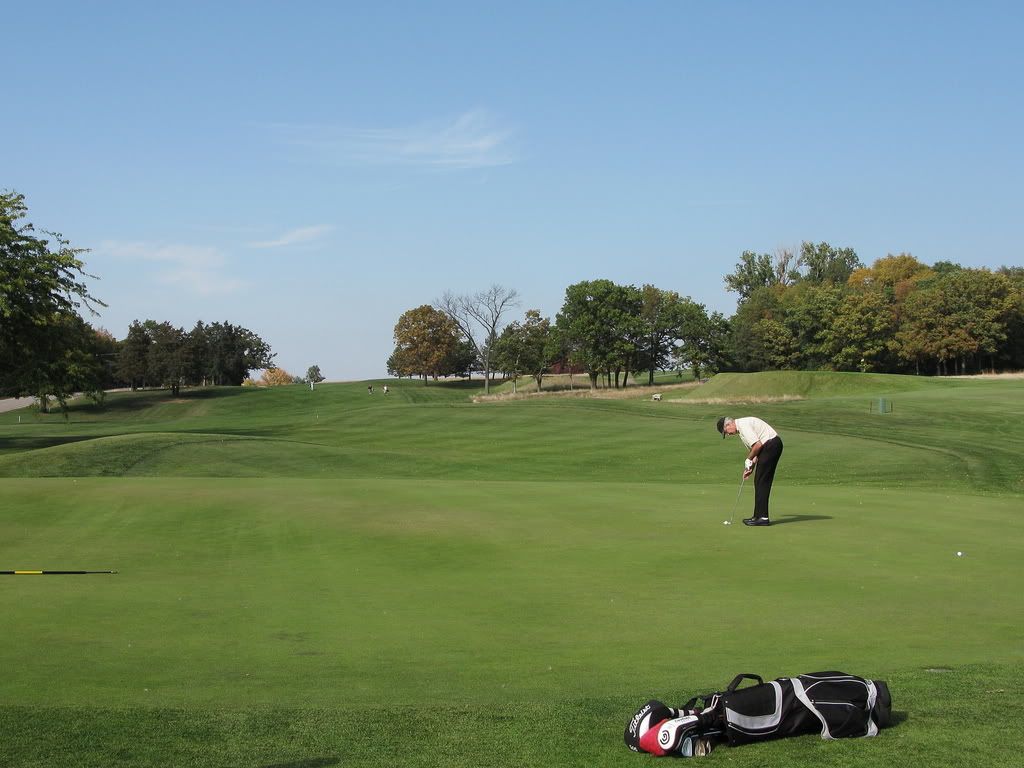
6th Hole 439/406 (410)
The 6th is a glorious hole; long, expansive and replete with subtlety and strength. Starting from a tee tucked back and to the right, one is confronted with a huge cross bunker 200 yards from the tee. The green is visible in the distance 445 yards away just peeking out from the top of the cross bunker. The perfectly aligned cross bunker hides not only the angled landing zone but two fairway bunkers which defend the left edge of the fairway; one a double nostriled principal’s nose. The cross bunker is masterful as it provides a measure of blindness, challenge, mystery and treachery on a wide open downhill hole where everything should be right in front of you, yet is not; an amazing architectural feat.
From the tee the hole flows down and to the right with the landing zone moving significantly downhill beyond the cross bunker . A very good drive may leave a slightly downhill lie only to face a green that is down the hill from where you stand yet sitting up, perched on a beautifully manufactured greensite. In fact the final approach to the green is quite steep and often makes an attempt at a running approach stop dead and roll back down the hill. The green is large and welcoming as a whole but is bisected by a large ridge running from the front left toward the back right where it flattens out. This gives the green three distinct sections. The high front portion angled to the right, the flattish back right portion and the lower back left portion. The difficult task of finding the right section of the green with your approach is the key to success.
6th From Tee (photo Brent Carlson)

The Brilliant Cross Bunker

More Tree Thinning Right of Cross Bunker in 2008

6th From Crest of Hill

6th From 200
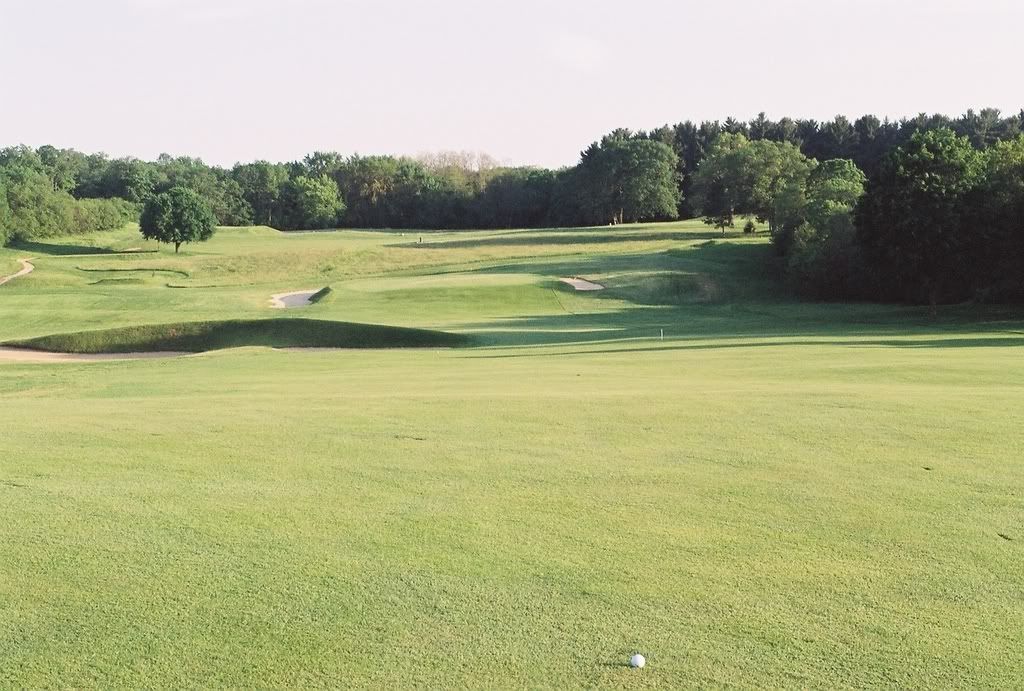
6th Principal’s Nose Bunker
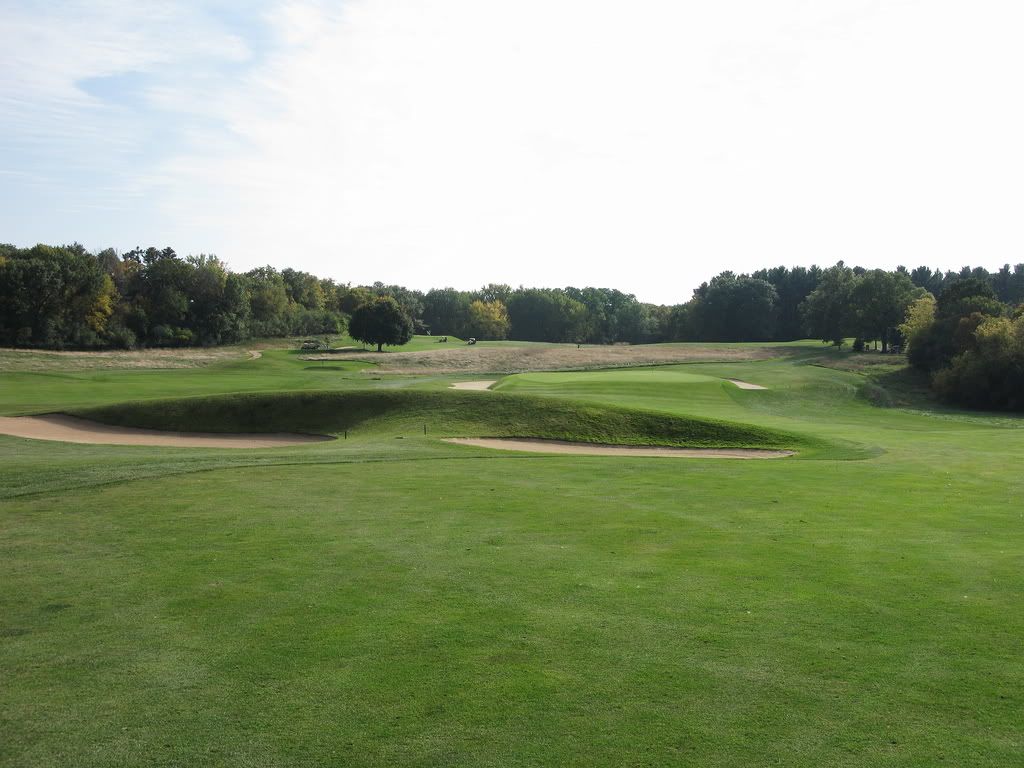
6th From 8th Fairway showing tiered green
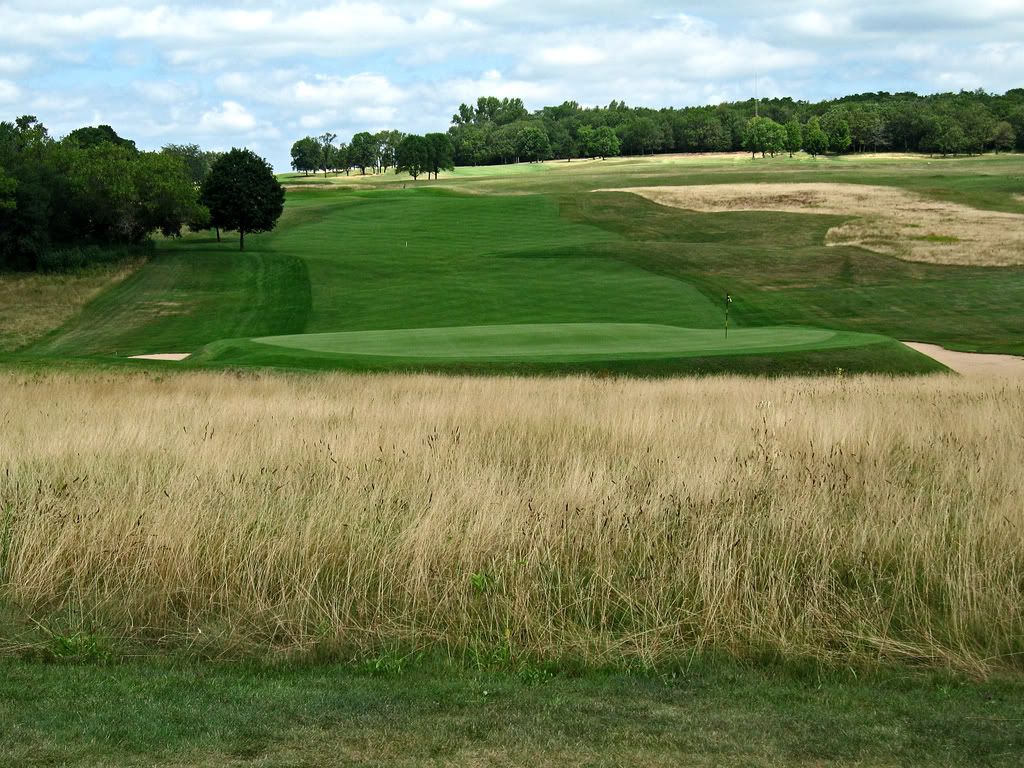
7th Hole 161/146 (130)
The famed boxcar hole with nowhere to miss the green; another era’s version of the 17th at Sawgrass.
7th From Tee
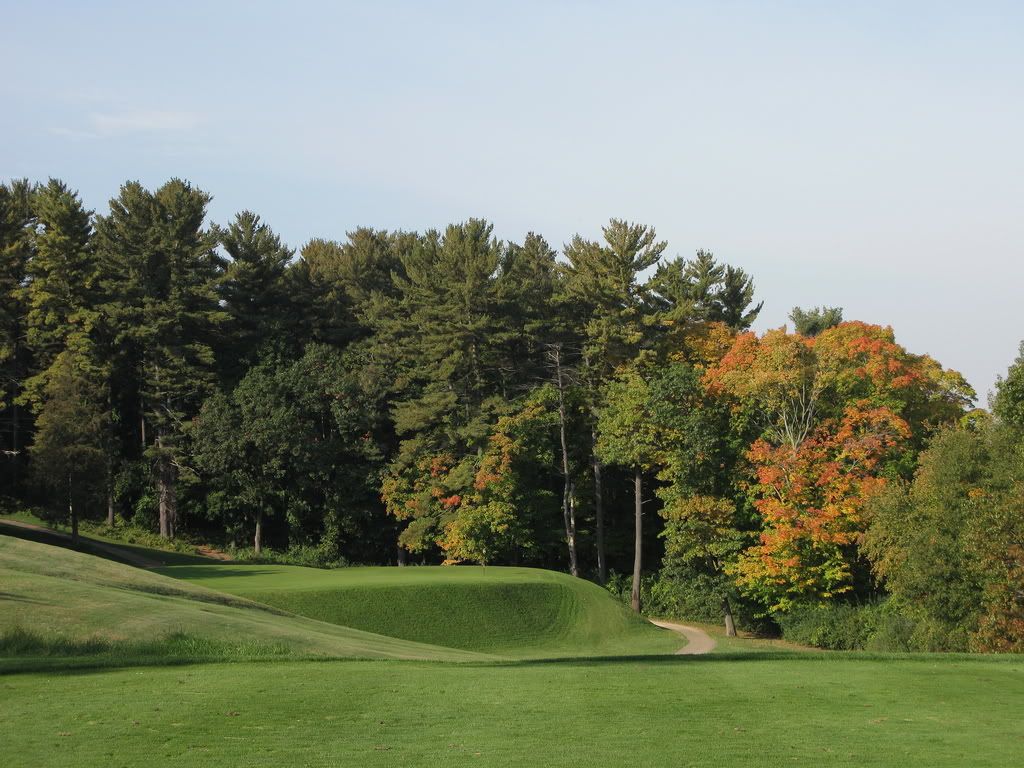
7th From Green
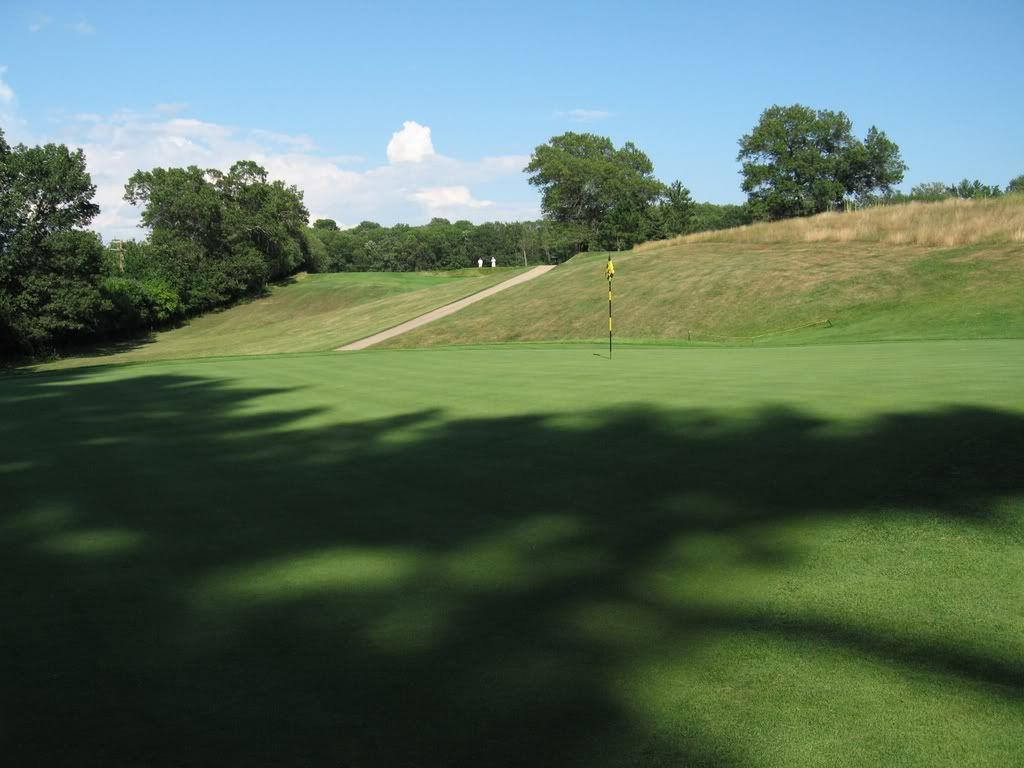
7th From 8th Tee Area

7th Site of Missing Bunker Left of Green
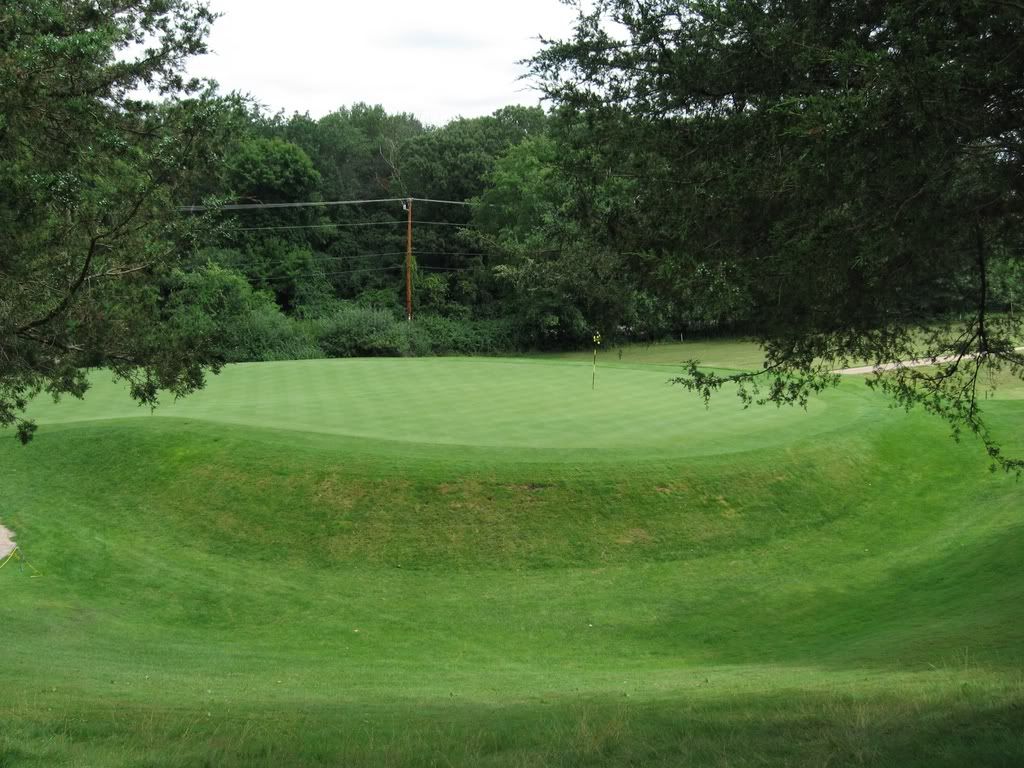
8th Hole 339/322 (350)
A short par 4 requires a strategically placed drive to have any chance of getting close to the pin on the deceptively elevated green. As tempting as the direct line to the green may look, the proper play is straight ahead over the cross bunker.
8th Tee Box as Seen From Behind 7th Green
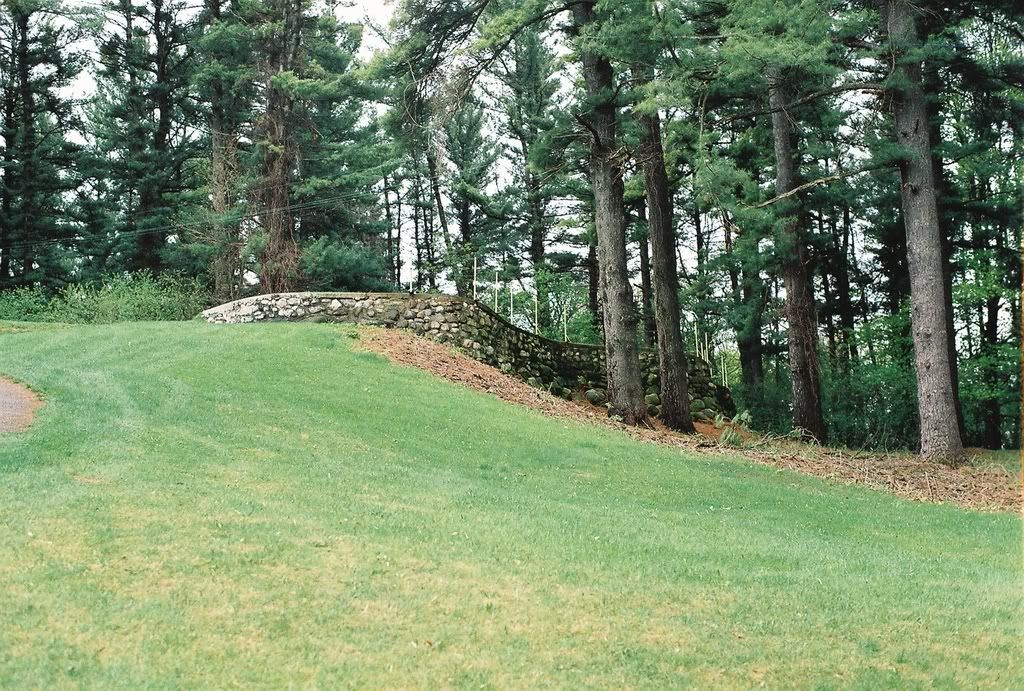
8th From Tee Pushed far to Right
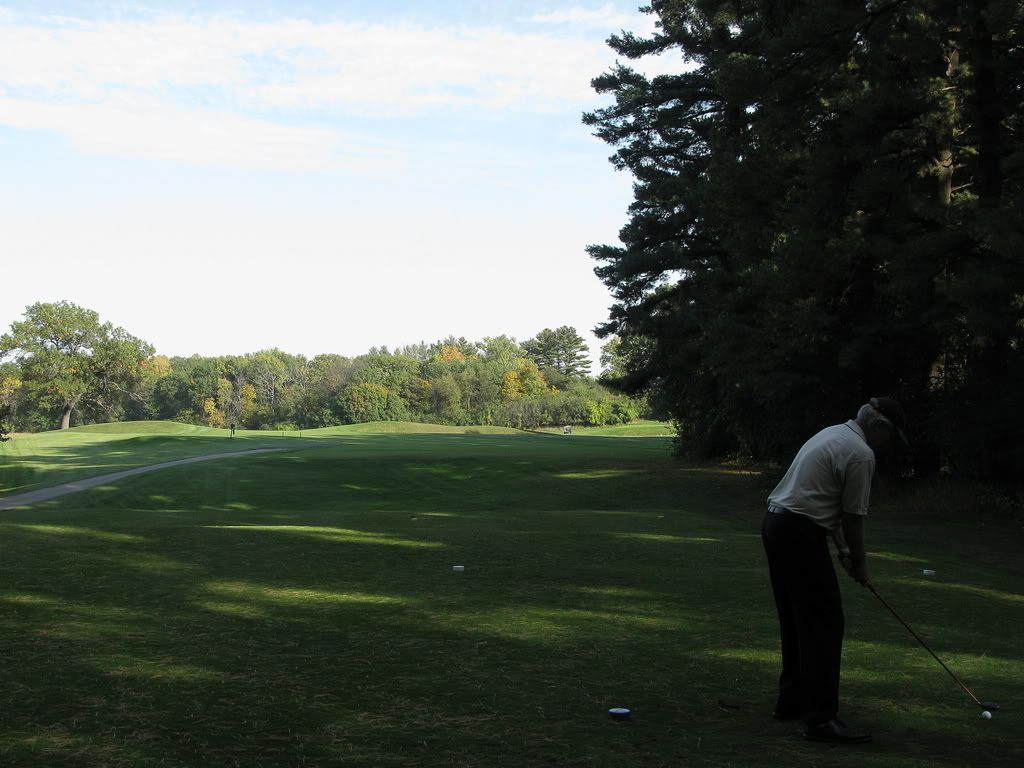
8th from left side of tee. Trees between cross bunker and green once blocked direct line to green
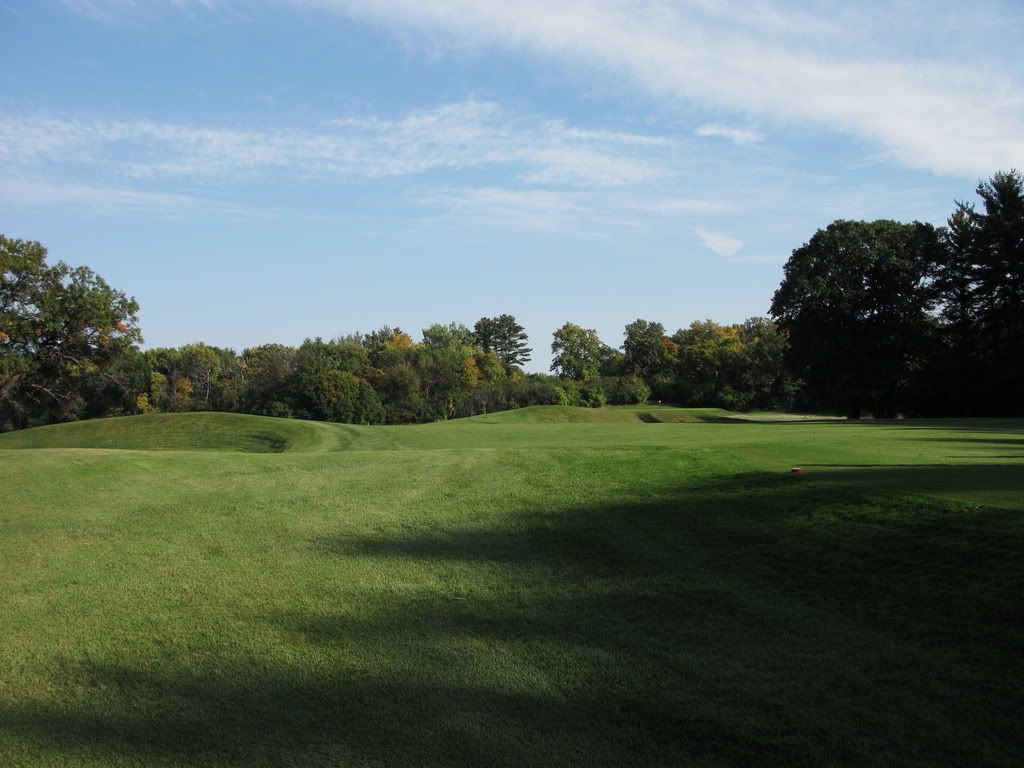
8th From Landing Zone

8th From Green Looking Back at Tee and 7th Green
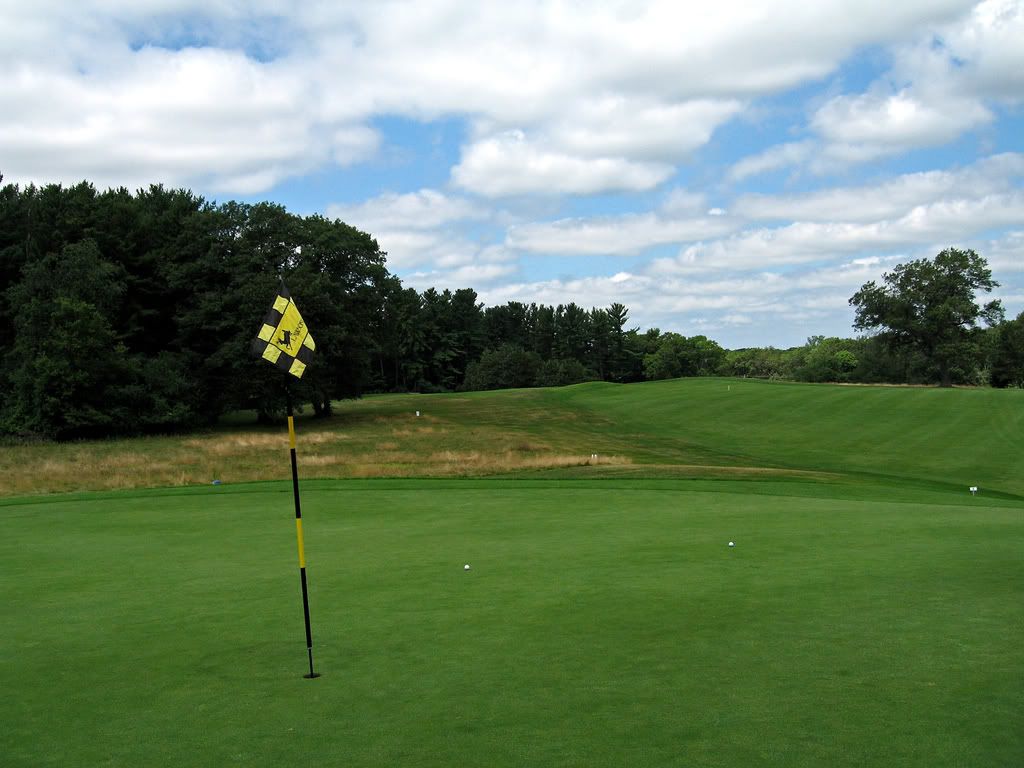
9th Hole 536/529 (540)
The 9th hole starts a quirky sequence of three consecutive back to back par 5’s and par 3’s. The holes are so different many players do not realize they have just played 6 holes without seeing a par 4.
The ninth features a drive over another cross bunker with a cape-like area of fescue challenging those wishing to cut the corner. The 2nd goes up through a bottleneck at the crest of the hill pinched by two large fairway bunkers. The least built up green on the course is anything but flat.
9th From Tee Fescue Area was littered with trees prior to Ron Forse’s arrival
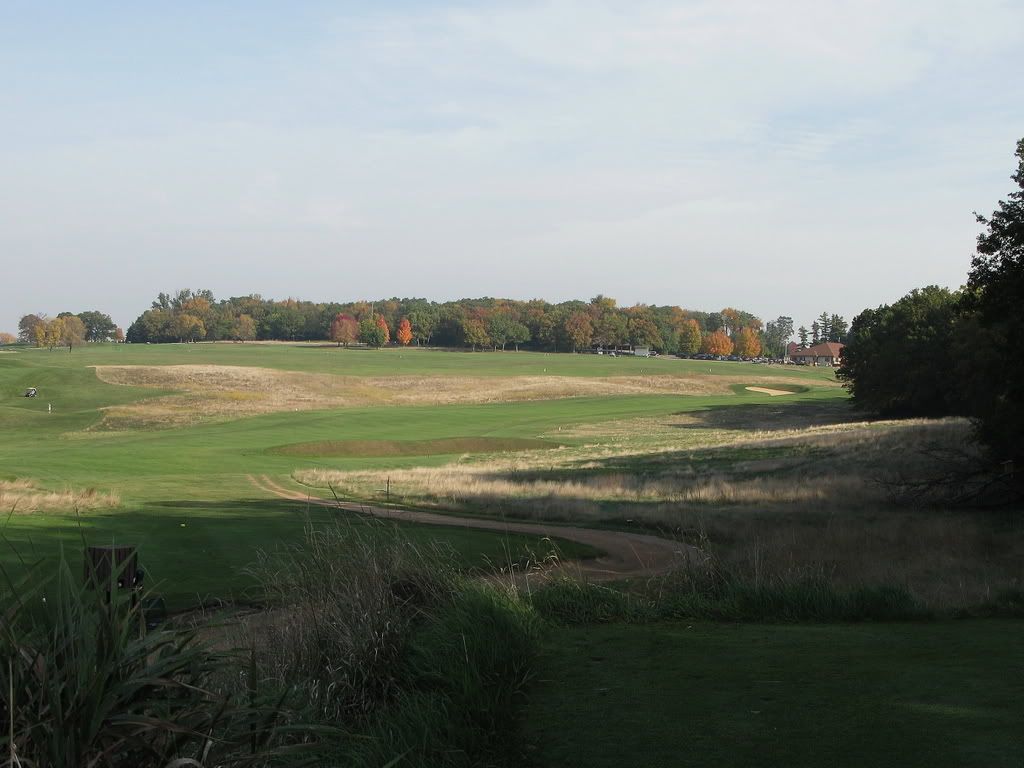
9th From 7th Tee with 8th Green in Foreground
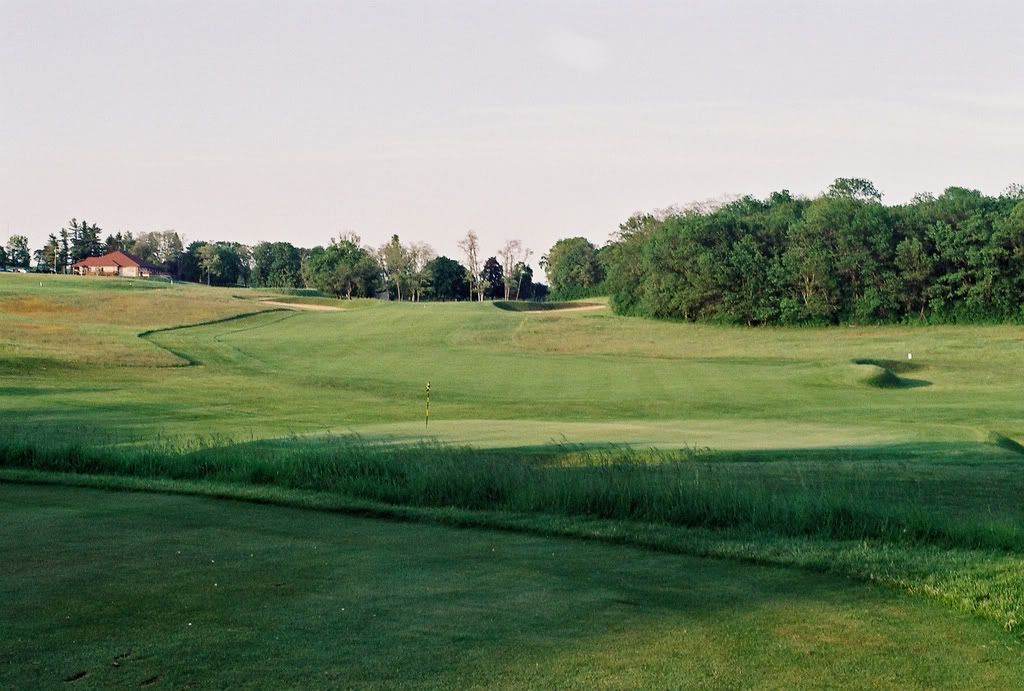
9th From Landing Zone of Drive
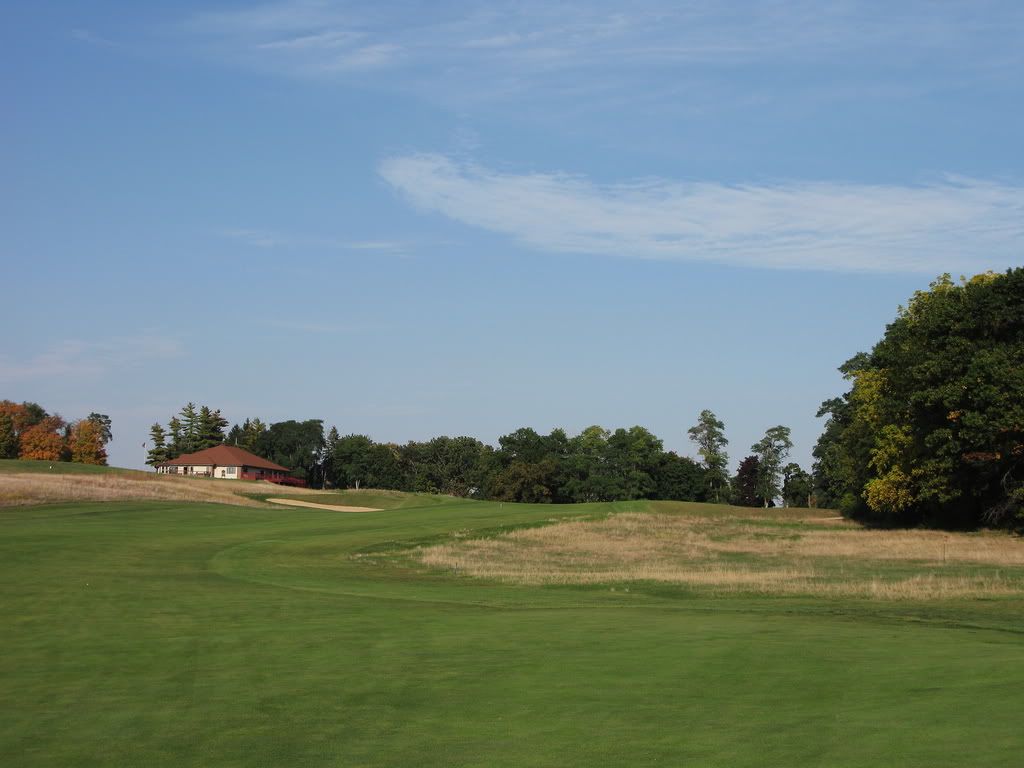
9th Through the Bottleneck
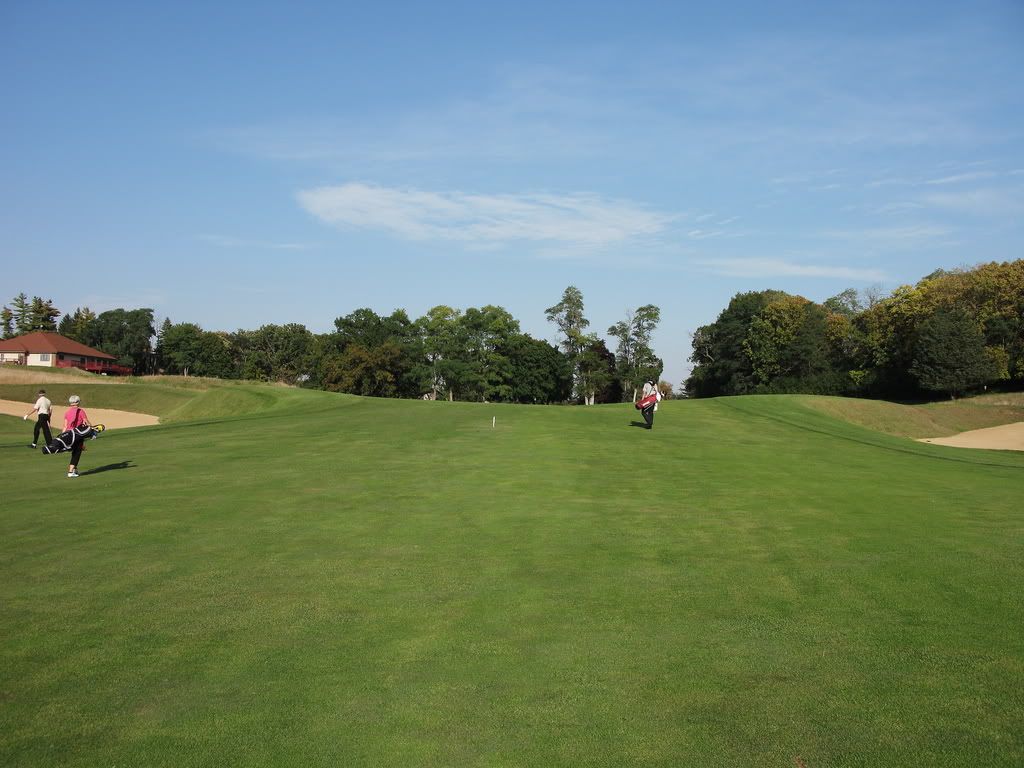
9th Green from 100 yards
